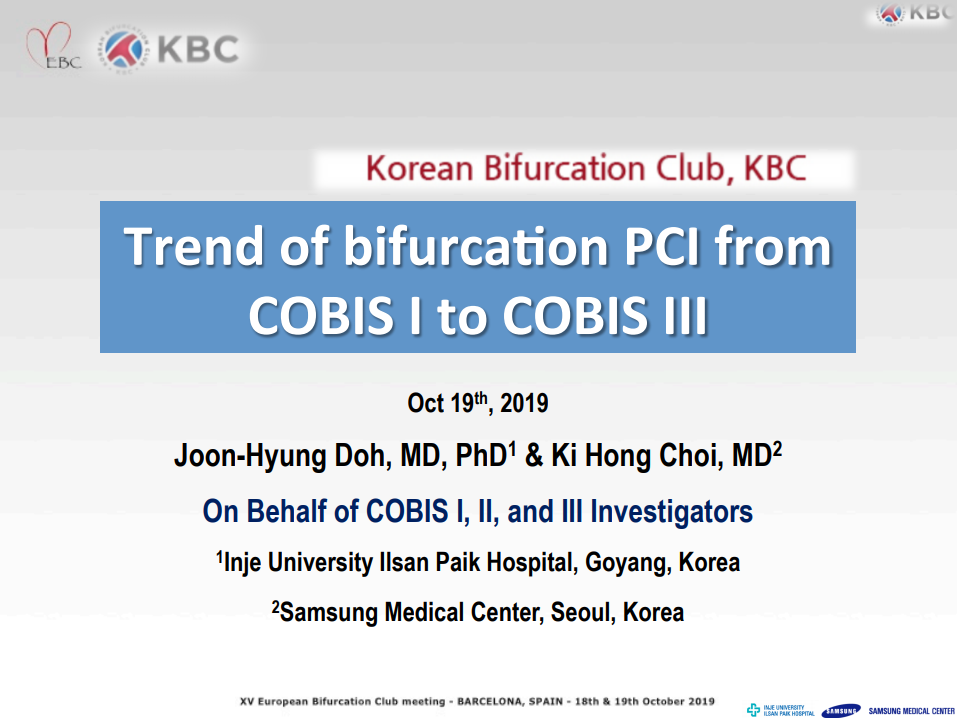Differential Prognostic Impact of Treatment Strategies for LM Versus Non LM Bifurcation Lesion.
European Bifurcation Club 2019, EBC 2019 - Barcelona, Spain LM SESSION Differential Prognostic Impact of Treatment Strategies for LM Versus Non LM Bifurcation Lesion. Lessons from the COBIS Registries Author: Young Bin Song, MD, PhD, Samsung Medical Center, Korea Stent Technique (1-Stent vs. 2-Stent) The 1-stent strategy, if possible, should initially be considered the preferred approach for the tr eatment of coronary bifurcation lesions, especially LM bifurcation lesions. Clinical Outcomes Between LM VS Non-LM Patients with LM bifurcation showed significantly higher risks of target lesion failure, cardiac d eath or myocardial infarction, and target lesion revascularization compared to those with non-L M bifurcation. CONCLUSION & SUMMARY Patients treated with PCI for an LM bifurcation lesion had poorer outcomes than those with a non-LM bifurcation lesion in the era of second-generation DES. In the treatment of LM bifurcation, the 2-stent strategy was associated with a higher risk of T LF than the 1-stent strategy, mainly driven by higher risk of TLR; however, incidence of cardiac death or MI was not different between the strategies, unlike previous results from the COBIS II registry. In the treatment of a non-LM bifurcation, there were no significant differences in TLF, cardiac death or MI, and TLR between the 1-stent and 2-stent strategy groups.




